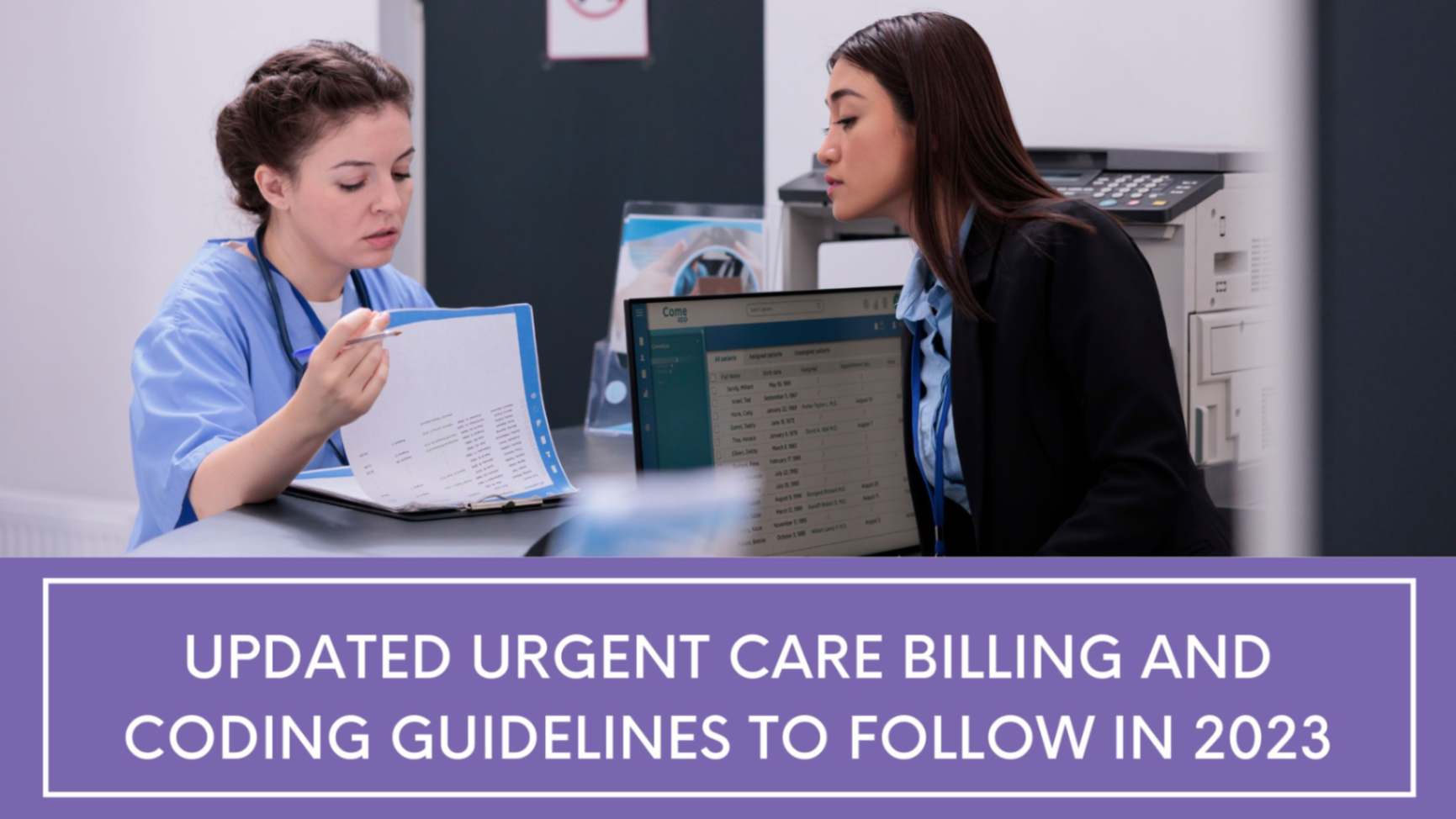Urgent Care Billing and Coding Guidelines
Many diseases affect the wider public as the population grows and healthy lifestyles decline, and this necessitates the initiation of more medical firms. Despite multiple innovations in the industry, such as virtual visits, people are dissatisfied with patient care.
One encouraging note is that urgent care centers are taking the center stage and people are satisfied with this service option. The popularity is not just getting the attention of the patients, but also the payers too. In just nine years, the private insurer’s claims percentage for urgent care increased considerably. Even though urgent care centers are receiving attention from the major players in healthcare, many centers are losing a significant sum in payment collection due to billing and coding errors.
Missing these dollars will have an impact on how successful your practice is in profit-making. Being a perfectionist in practice and making billing mistakes is like preparing good food and throwing it away without tasting it. You must be excellent at billing and coding the services to enjoy the taste of payments.
Here is a detailed look at the 2023 urgent care billing and coding guidelines.
Table of Contents
Why have Urgent Care Clinics Become So Popular?
Urgent care facilities are becoming increasingly popular and reduced wait times is one major contributing factor. Consider how irritating it must be for someone in need to wait for help, the urgent care centers appear to be a boon to them in terms of cheap and timely healthcare. About half-hour is typically sufficient to obtain care in urgent care center.
An Overview of Guidelines 2023
Billing for urgent care is similar to primary care as both facilities treat similar conditions. On the other hand, there are CPTs that are specific to urgent care, and are distinguished by codes starting with “S”. The two codes applicable for all urgent care services excluding Medicare are S9083; S9088.
- Code S9083
Payers use this to bundle all services provided during an urgent care visit into a single payment code regardless of the treatment procedures involved. In addition to this, for services provided by Managed Care Organizations (MCO), they require a hospital to bill S9083. More specifically, MCOs in Florida and Arizona for urgent care need to bill services only under this code.
- Code S9088
Waiting time at urgent care centers is minimal which indicates that practitioners keep working without compromising their time. In addition, many practitioners consider that urgent care is more expensive than primary care. The code S9088 will assist you in meeting them. Practitioners can be reimbursed by using this code for providing immediate care. S9088 code should be listed along with appropriate evaluation and management code.
The Most Common Urgent Care Codes That are In Usage
Most of the CPT codes used for urgent care are E/M codes. A few of the most regularly utilized CPT codes are as follows:
- Level 4 E/M (99204) is used for a new patient visit based on the level of care provided.
- Level 3 to Level 4 E/M (99213 and 99214) are used for established patients based on the level of care provided.
Revised CPT Codes In Urgent Care
Submitting claims by appropriately following the CMS’ rules and regulations is vital. The CMS reforms have a strong influence on claim submission and success rates. As a result, urgent care clinics need to watch code changes. Here are some changes made to the CPT codes for urgent care:
To report CPT codes 99202/99215, providers must first complete appropriate patient history and examination, even though they do not influence code selection. The following criteria are used to select E&M codes:
- Medical Decision-Making level (MDM).
- The total time spent for the treatment session on the day of the encounter.
- For CPT codes 99202/99215, the time requirement has been modified from face-to-face time to the total time spent on the day of the encounter.
Bottom Line
Running the practice and dealing with billing in urgent care might look effortless, but the complexities involved would drain your strength. It is not a good idea to manage these operations internally. Complying with ever-changing rules is a challenge for physicians and clinics. Urgent Care clinics can completely focus on patient care by outsourcing RCM functions to Practolytics. We carry out a variety of roles, including coding and submitting patient claims. We are committed to give real-time solutions by prioritizing you and your practice.
Get in touch with us at: [email protected]
ALSO READ – 2023: New Changes and Updates in ICD-10 CM Codes
Talk to Medical Billing Expert Today — Get a Free Demo Now!






